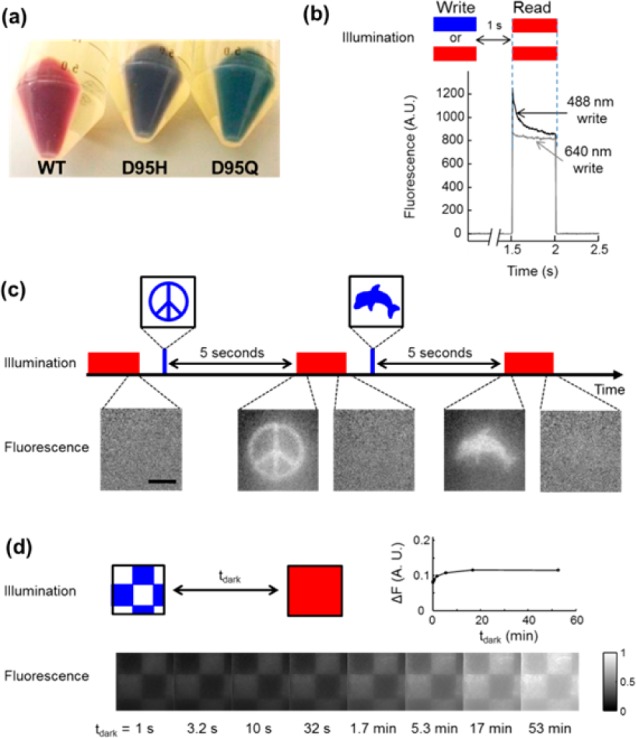Figure 2.

Fluorescence bistability in mutants of Arch. (a) Image of three pellets of E. coli expressing different mutants of Arch. (b) Bistability in Arch(D95H) expressed in HEK cells. Initial fluorescence under red excitation (λread = 640 nm) was different for λwrite = 640 nm than for λwrite = 488 nm. The write pulse was 500 ms, 200 W/cm2 and the dark interval was tdark = 1 s. (c) Imprinting of photochemical images in a lawn of E. coli expressing Arch(D95H). Illumination with a pattern of blue light converted Arch(D95H) into a long-lived fluorescent state. After a 5 s delay, the pattern was probed with red excitation and near-infrared fluorescence. The red illumination eventually erased the pattern. The process was repeated on the same cells with a different pattern. Scale bar 50 μm. (d) Monitoring lifetime of bistability. A checkerboard pattern was imprinted via blue light and probed via red-induced fluorescence after a variable delay tdark. Inset graph shows the difference in fluorescence of the bright and dark squares as a function of tdark.
